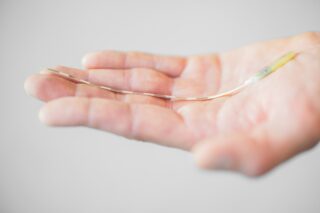Engineers at Stanford University in California have developed a pair of glasses that automatically adjust their focus depending on where the eyes are looking. The glasses, which feature eye trackers that constantly monitor where the user is looking, could be used to help those with presbyopia who have problems focusing.
Nitish Padmanaban, Stanford PhD candidate within the Computational Imaging Lab, said:
“People are familiar with the idea of needing reading glasses or bifocals as they age. It turns out that this change occurs because the lens in the eye stiffens over the course of your life: it is a gradual process that affects everyone.”
He added:
“Usually people notice a reduction in focusing range by their late 40s, at which point they get diagnosed with presbyopia. Since autofocals have a focus-tunable lens that can change focal length, we can compensate for the loss of focusing ability of the eye’s lens with these external lenses.”
The autofocal glasses work by using eye-tracking data from two cameras to estimate gaze distance, which then is used to update the focus-tunable lenses. They have three major components: the depth camera, the eye trackers, and the focus-tunable lenses. The depth camera faces the world and reports distances to objects as a depth map. The eye trackers serve to compute two estimates of gaze distance.

The first estimate comes from using the tracked gaze direction to index into the right position in the depth map. The second estimate uses gaze direction from both eyes and computes the distance of intersection of those rays. Mr Padmanaban said:
“We then fuse both of those estimates and tell the focus-tunable lenses to change focal power. The focus-tunable lenses we use work by changing the shape of a membrane by pushing liquid into and out of the lens chamber.”
An Eye on the Future
The project uses research-grade components as they are easier to obtain and repurpose, but this does currently make them bulky. However, there are other types of focus-tunable lenses and cameras that could help us make future prototypes smaller,” said Mr Padmanaban. The glasses could also potentially have other applications, he suggested:
“While this is not a focus area for us right now, you could also theoretically use focus-tunable lenses to create a pair of glasses for fixing near and farsightedness. They would have the added benefit that you could just update them as your vision changes without needing to replace your glasses.”











